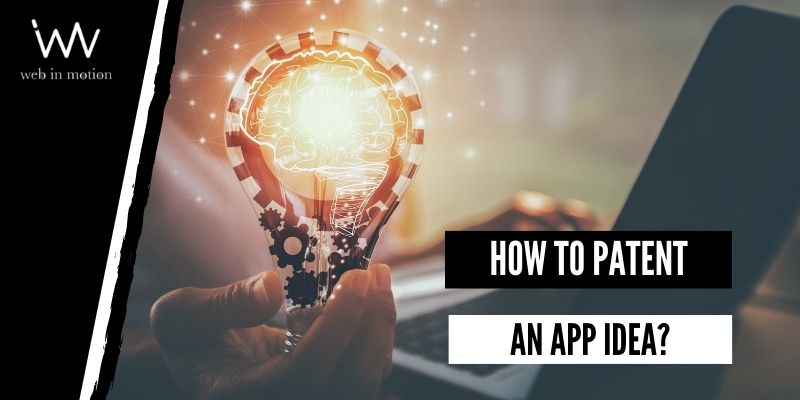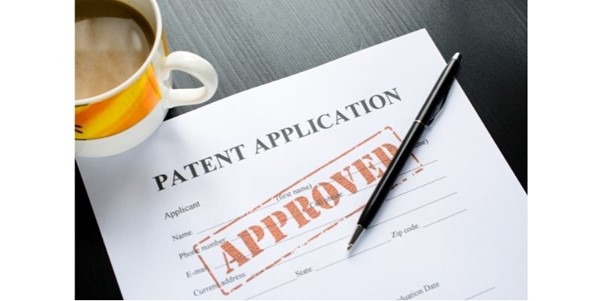
How to patent an app idea?
Some minutes after that “eureka” moment in which you come up with an idea for an app, you may be wondering if this idea will need protection.
Do you need to patent your app?
The answer is yes, but first, you must consider some conditions. Patenting an app can be a challenging, expensive, and lengthy process that you may skip in some cases.
But let’s start from the top. Why a patent? Patent law provides inventors the ability to secure a monopoly in the market for 20 years with government help in the US. The only requisite is to tell the world how to make and use your invention. And then, nobody can make, use or sell your invention without permission.
In the vast and competitive universe of mobile apps, protecting intellectual property is more important every day. Although apps can be patented, they must meet the same criteria of novelty as other products. So your first step is to ask yourself, “what’s new?” and “Is it not obvious?”.
By “not obvious,” we mean that the app must meet the standard of “non-obviousness.” This means that the product seeking a patent must be different enough from similar existing products that a person with some knowledge in the area would not conceive of or make by themselves easily.
If you think your app meets these criteria, the next step is to consider when to apply for a patent. The optimal moment depends on several factors, including the business scope and your plans for the app.
For example, you may want to ask yourself if prospective investors would like to see the patent before investing, or the same goes for possible buyers.
But you can apply for a patent very early in the invention process, as soon as you have a detailed understanding of how your app will work.
Next, we will show you some basic steps before and during patent applications for apps in the US.
The novelty test
The first step towards applying for a patent is to pass some tests or requisites that your invention must comply with.
1. It has to be an “invention.”
Usually, patents are meant to protect inventions. Therefore, a patent is granted to the invention that looks to solve a problem. An app is not a physical object, so the process of the app is categorized as an invention. But they are considered as an invention if this process resolves a problem.
2. An app idea must be new and unique.
Even if your app solves a problem for your users, it doesn’t ensure it is eligible for the patent. It also needs to be new and non-obvious. This means your app has not been disclosed earlier in a public format, including books, other patent applications, articles, or social media.
And your app must be non-obvious, which means no person, even with reasonable knowledge of app development, cannot think of the same idea.
3. It must be qualified as useful.
This means that your app must work, at least in theory. Most patent applications must include a concrete and detailed explanation of how your application works or will work.
Now, let’s explore some previous steps before submitting your app patent application.

Step 1: Chronicle your idea
Before applying for a patent, it is highly advisable to document everything, every step of creating your app: from the first conception, idea, and plans for the future. For this step, you may want to answer on paper some of these questions:
- Were you actively trying to solve a problem, or you came with it by chance?
- Were there other people around when you had this idea? Others talked about this?
- Was it a chain effect in which your idea led to a better view by another person?
All of these details are important because they may influence whether your app idea is merely yours or co-invented. And therefore, possible copyright lawsuits can be avoided with this simple step.
Step 2: Do your research
This step can be overlooked or done lightly in the vast world of apps: it is hard to investigate because of how large the market is. But this is precisely why it is so important to do research. You must be sure that a software or app solution is new in the US and abroad. Besides, many solutions may be created already but not yet marketed.
There are official lists for these cases: you can review already pending and granted patent applications for similar ideas.
Step 3: Don’t do this alone
The most advisable way to follow a patent application process is to hire a software patent attorney or law firm. But be aware, this is not a requisite, especially if you don’t have available resources to pay for this service. You can apply, but some specifics can be overlooked.
If you decide to hire an attorney or law firm, make sure to choose well. Don’t just go to the first attorney you meet or find on Google.
The person you should hire is not just a software patent attorney; it’s best to look out for a great all-around patent attorney. This is because you will need help with the legal process, not that much with the software or tech side of your idea.
Step 4: Software app invention disclosure
After all the research, documenting, and hiring, fully disclose your app idea in your patent application process.
Many app developers have an app prototype and then believe this working version is enough to secure patent protection.
But most patent attorneys will make you describe the details of this app; how does it work? So, you may be tempted to show some codes or structure or network. But we have to understand that we’re not protecting the code with the patent.
The aspect we’re protecting with utility patents is the functionality of your app, which is best known as a flowchart.

Step 5: Provisional or nonprovisional patent?
Whether to file a provisional or nonprovisional patent application will depend on your app solution, market size, and business plan.
If you are in a hurry to enter the market, you likely need to file a nonprovisional patent application. This is because the nonprovisional is the official and formal submission that the USPTO (the United States Patent and Trademark Office) examiner will review later and decide whether to grant it or not.
A non-provisional patent, also known as a utility patent, requires a detailed description of your app’s invention. Most people include drawings, flow charts, and details that show how your app works.
If your app idea needs some more user testing and improvements, maybe you should file a provisional application or patent-pending in the meanwhile. This will allow you to “hold your place in line” with the USPTO; this way, and you ensure no one can file the same idea before you’ve gotten a complete application submitted.
For the provisional patent, make sure you don’t miss the 12-month timeline imposed by the USPTO for renewing the application. Some developers take their time in finishing their invention and ultimately end up losing their patent.
How much does it cost to file for a patent?
Usually, the cost of patenting an app depends on the type of patent you need to submit. For provisional patents, you generally pay approximately 2,000 to 5,000 USD. Once you filed a provisional patent, you can develop and launch your application and test your app’s success.
For non-provisional patents, it may cost between 10,000 and 15,000 USD. Once you filed your patent, the USPTO will evaluate it. This process can take between one and three years


